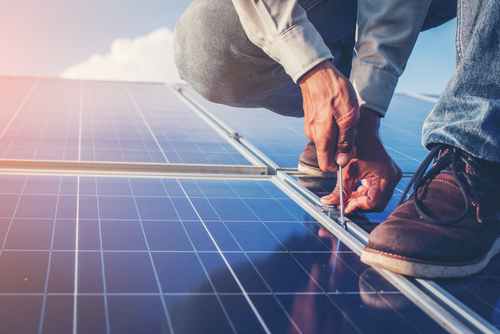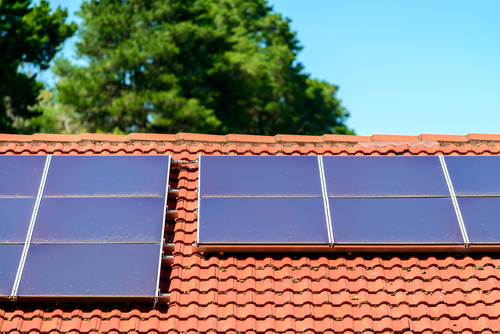
Solar Panel Installation in Singapore for Homeowners
August 1, 2023
Guide To Solar Power For Homeowners In Singapore
August 2, 2023Solar Energy in Singapore’s Green Building Certificate

Solar Energy in Singapore's Green Building Certificate
The Role of Solar Energy in Singapore’s Green Building Certificate.
As we grapple with the effects of climate change, green building certifications like Leadership in Energy and Environmental Design (LEED) and Building and Construction Authority’s (BCA) Green Mark have become increasingly important.
These certifications help set a standard for environmental responsibility and encourage the construction industry to incorporate sustainability into their projects.
Solar energy plays a significant role in achieving these certifications. It offers a renewable power source, reducing a building’s reliance on fossil fuels and, in turn, minimizing its carbon footprint.
LEED, developed by the U.S. Green Building Council, is a globally recognized green building certification, while BCA Green Mark is a benchmarking scheme for environmental design and performance in Singapore.
Read on – Solar Energy in Singapore’s Green Building Certificate:
Understanding Green Building Certifications
The Concept and Significance of Green Building Certifications
Green building certifications set a standard for environmentally-friendly construction practices and encourage sustainability in the industry. They often influence a building’s life cycle’s design, construction, and operation phases.
Distinction Between LEED and BCA Green Mark
While both LEED and BCA Green Mark aim for sustainable development, their approach and scoring vary. LEED takes a more holistic view, whereas BCA Green Mark focuses on energy efficiency and environmental sustainability as per Singapore’s unique context.
Key Criteria for These Certifications
Energy efficiency, water efficiency, sustainable site development, indoor environmental quality, and materials selection are critical criteria for both certifications. Solar energy comes under the purview of energy efficiency.
Solar Energy and Its Sustainability Impact

How Solar Power Contributes to Sustainability
Solar power is a renewable energy source that significantly reduces a building’s carbon footprint, thereby contributing to sustainability.
Solar Energy’s Environmental Benefits
By harnessing the sun’s energy, buildings reduce their reliance on fossil fuels, thereby minimizing greenhouse gas emissions.
The Role of Solar Energy in Sustainable Building Design
In sustainable building design, solar energy can be integrated into the architecture via photovoltaic panels, solar hot water systems, and passive solar design strategies.
Solar Energy in LEED Certification
Importance of Solar Power in LEED Scoring
Solar power installations can help a building earn Energy and Atmosphere credits in LEED, contributing to a higher score and potentially a higher certification level.
Case Studies of LEED-Certified Buildings with Solar Energy in Singapore
Buildings like the Singapore Institute of Technology (SIT) and Mapletree Business City have effectively utilized solar power and achieved high LEED ratings.
Tips for Maximizing LEED Points with Solar Energy
Consider implementing solar photovoltaic systems, and solar thermal systems and integrating solar energy into a building’s design early in the planning stage.
Solar Energy in BCA Green Mark Certification

Role of Solar Power in BCA Green Mark Assessment
In the BCA Green Mark scheme, solar energy usage can contribute to the achievement of Energy Effectiveness points.
Case Studies of Green Mark Certified Buildings with Solar Power in Singapore
In Singapore, the Zero Energy Building and CapitaGreen buildings have effectively utilized solar power to achieve high Green Mark ratings.
Strategies for Enhancing Green Mark Scores with Solar Energy
Consider rooftop photovoltaic installations, optimizing solar power usage, and incorporating other sustainable design strategies.
Costs and Savings Associated with Solar Energy
Initial Costs of Solar Power Installations
Solar power installations require a significant initial investment. However, the reduction in energy costs and various incentives often offset this.
Potential Savings and ROI from Solar Power
Solar power can drastically reduce energy bills. Moreover, excess energy can be sold back to the grid in Singapore, providing additional savings.
Impact of Solar Power on the Cost-Efficiency of Green Buildings
By reducing energy costs and potentially increasing the building’s value, solar power significantly contributes to the cost-efficiency of green buildings.
Navigating the Certification Process with Solar Energy
Steps for Integrating Solar Energy into Certification Plans
Incorporating solar energy in the initial design stage can streamline the certification process. Engaging an energy consultant or a solar installer can also be beneficial.
Challenges and How to Overcome Them
Challenges can include financial constraints, the suitability of the building for solar installations, and technical issues. However, with careful planning, it’s possible to overcome these.
Engaging Professionals: Architects, Energy Consultants, and Solar Installers
Professionals can provide valuable guidance in optimizing the solar power potential of a building and navigating the certification process.
Incentives and Support for Solar-Powered Green Buildings

Singapore Government Incentives for Solar Power in Green Buildings
The Singapore government offers incentives like the SolarNova program and the Building Retrofit Energy Efficiency Financing (BREEF) scheme to encourage solar adoption.
Exploring Grants, Tax Rebates, and Subsidy Schemes
Grants and rebates, such as the BCA’s Green Mark Incentive Scheme for Existing Buildings (GMIS-EB), can offset costs and make solar power installations more affordable.
How to Apply and Capitalize on These Incentives
Applying for these incentives usually involves submitting a detailed proposal or application to the respective agency.
The Future of Solar Power in Green Building Certification
Trends and Innovations in Solar Energy
Innovations like bifacial solar panels and tracking systems make solar power more efficient and accessible.
The Evolving Criteria of LEED and BCA Green Mark
As sustainability norms evolve, so do the criteria of LEED and BCA Green Mark. We may see an even greater emphasis on renewable energy in the future.
Singapore’s Vision for Solar-Powered Green Buildings
Singapore aims to green 80% of its buildings by 2030 under the Green Building Masterplan. Solar power will play a crucial role in achieving this target.
FAQs
Does Solar Energy Significantly Boost LEED or Green Mark Scores?
Yes, solar energy can significantly contribute to the energy efficiency credits of both LEED and BCA Green Mark, boosting overall scores.
What Types of Buildings Can Benefit Most from Solar Energy?
All types of buildings, from residential to commercial, can benefit from solar energy. However, the suitability of the building for solar installations plays a significant role.
Can Solar Power Installations Pay for Themselves Over Time?
Yes, through energy savings, selling excess power back to the grid, and various incentives, solar installations can pay for themselves over time.
How to Find Professionals to Assist with Solar Installations and Certifications?
Professional bodies like the Singapore Green Building Council (SGBC) and the Sustainable Energy Association of Singapore (SEAS) can help find certified professionals.
What Innovations Are Making Solar Power More Accessible and Efficient?
Bifacial solar panels, solar tracking systems, and advancements in battery storage are some innovations improving solar power’s accessibility and efficiency.
Solar Energy in Singapore’s Green Building Certificate – Conclusion

Solar energy is crucial in green building certifications, contributing to energy efficiency and reducing a building’s environmental impact.
Solar power is a wise investment for future-proofing buildings considering the environmental benefits and potential cost savings.
With Singapore’s vision to green 80% of its buildings by 2030, solar-powered green buildings are set to become a norm, marking a sustainable future for the city’s built environment.
Start your journey today if you’re considering integrating solar power into your building or working towards a green building certification! Contact us today!




